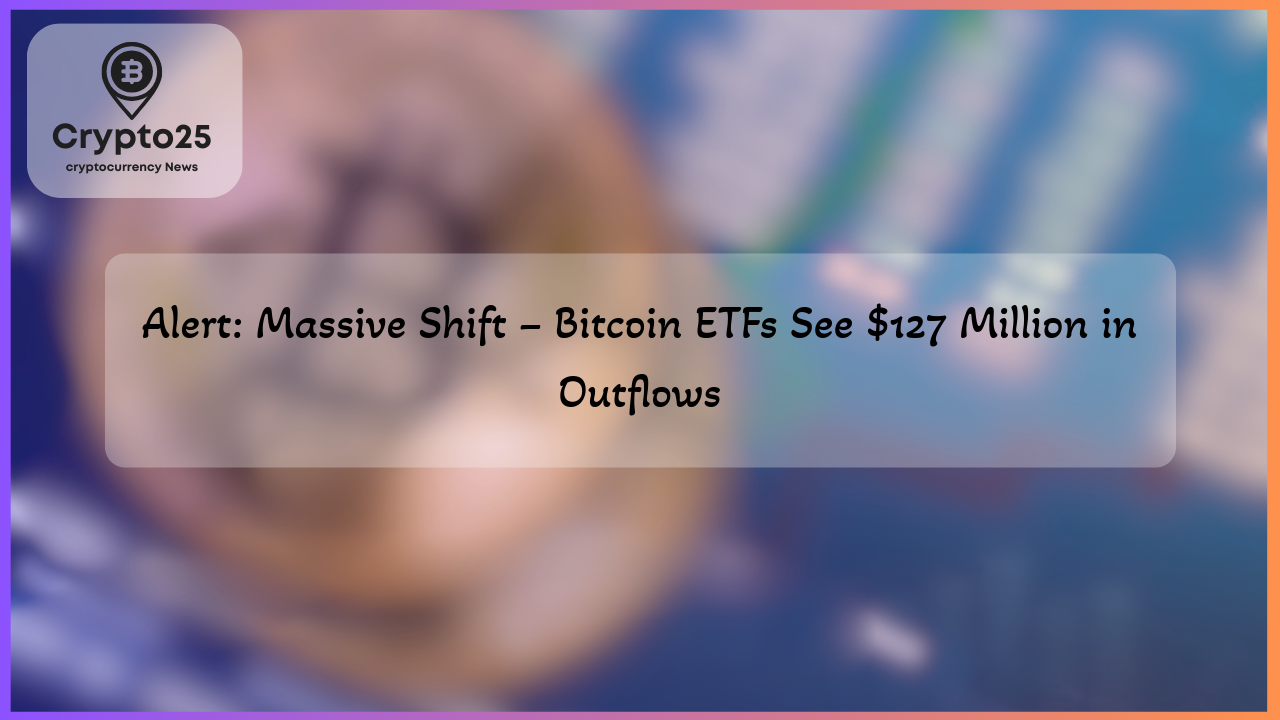
The cryptocurrency market witnessed dynamic shifts this week, with Bitcoin ETFs experiencing significant outflows amid global stock market surges prompted by geopolitical developments. This divergence underscores the unique behavior of crypto markets compared to traditional finance. As governments’ policies continue to influence both spheres, investors and analysts look deeper into the factors driving these volatility patterns.
### Bitcoin ETF Outflows Hit $127M Amid Market Uncertainty
Recent data reveals that U.S. Bitcoin ETFs recorded single-day net outflows of $127.12 million on April 9, 2025, marking an extended streak of withdrawals over five consecutive days. During this period, nearly $800 million exited Bitcoin ETFs, raising concerns over investor confidence in crypto-linked financial products. Prominent funds, such as BlackRock’s IBIT, bore the brunt, losing $89.71 million, while Grayscale’s GBTC saw $33.8 million in outflows.
Interestingly, smaller ETFs were not immune, with WisdomTree’s BTCW and VanEck’s HODL losing $5.7 million and $4.7 million, respectively. However, Bitwise’s BITB fund emerged as a rare positive, posting $6.71 million in inflows. Even Ethereum ETFs were not spared, with Fidelity’s FETH and iShares’ ETHA experiencing losses of $5.7 million and $5.5 million, respectively.
| Fund Name | Net Flow (April 9) |
|---|---|
| IBIT | -89.7M |
| GBTC | -33.8M |
| BITB | +6.7M |
| BTCW | -5.7M |
The ETF outflows follow a rocky period for Bitcoin ETFs, which had earlier welcomed inflows totaling close to $941 million in two weeks. This sharp reversal is attributed to increased risk aversion and external economic pressures, despite positive developments in other markets.
### Global Stocks Surge After Trump’s Tariff Announcement
The divergence between crypto and traditional markets became more apparent after President Trump announced a 90-day delay on new tariffs while increasing duties elsewhere. This announcement sent shockwaves across global markets, sparking optimism and fueling rallies in major stock indices.
European markets showed significant gains, with Germany’s DAX climbing 7.8%, London’s FTSE 100 surging 6.2%, and Spain’s IBEX 35 gaining 7.2%. Meanwhile, Asian exchanges followed suit, highlighted by Japan’s Nikkei 225, which jumped an impressive 8.68%. U.S. indices, including the Nasdaq and S&P 500, responded enthusiastically, achieving their best single-day performances in years.
Notably, crypto-related stocks also benefited substantially. Coinbase experienced a surge of 16.91%, while Strategy, formerly MicroStrategy, gained a remarkable 24.76%. These reactions illustrate the interconnectedness of crypto and equity markets in times of macroeconomic shifts.
### Crypto Market Rebounds with Optimism
While the pause in tariffs brought confidence to traditional equities, the cryptocurrency market also experienced a brief resurgence. Bitcoin rebounded, recording a 5.6% increase to $81,636, accompanied by Ethereum’s 8.45% rise to $1,585. Similarly, altcoins exhibited notable performance during the recovery phase. Solana, XRP, and Cardano rose by 8.41%, 10.26%, and 9.6%, respectively, signaling renewed investor interest in digital assets.
As of press time, the crypto market cap stands strong at $2.58 trillion, marking a 6.51% uplift in the past 24 hours. Trading volume underscores this positive sentiment, increasing by over 13.50%. However, whether this momentum can sustain remains uncertain, especially as markets anticipate the potential for heightened tariffs after the 90-day reprieve.
Crypto markets, often immune to the immediate effects of geopolitical decisions, continue to be shaped by both macroeconomic forces and internal dynamics such as regulatory developments and investor sentiment.
### Outlook for Crypto in a Volatile Global Economy
The recent divergence between Bitcoin ETF activity and equity market gains showcases the complexity of crypto’s role in the broader financial landscape. While government decisions, such as tariffs, trigger evident moves in traditional markets, crypto markets reflect their decentralized nature with sporadic volatility and independent trends.
As trade policies evolve and investor behavior adjusts, the next few months will highlight whether digital assets can sustain their recovery or face mounting external pressures. Investors are urged to monitor market patterns closely, as the crypto sphere continues to demonstrate resilience amid broader economic uncertainty.
